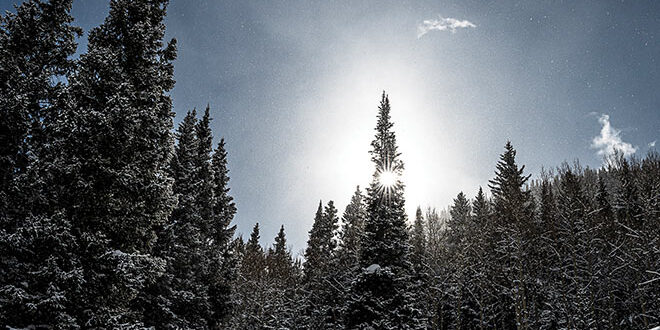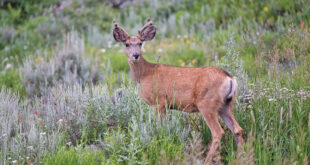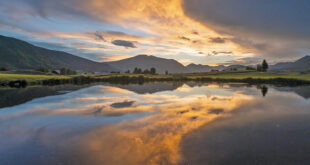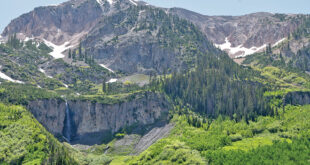The guiding philosophy that usually seems to work in this community is to make decisions that benefit the people living here and everything else will fall into place. The end results will attract people who like and appreciate what this community generally represents. Part of that successful decision-making process is thoughtful, out-of-the-box ideas, compromise and collaboration after community engagement
Right now, the Crested Butte council is focused on the decision of how best to configure Elk Avenue, both short-term and mid-term for the summers. Should it be one-way with a lot of restaurant seating in the streets like the last two summers? Should Elk be two-way with no such seating at all, even on the sidewalks? Those seemed the primary choices in front of councilmembers last week, but the choices felt incomplete and frankly, lazy.
Council will have a major public discussion about it at the next meeting on Tuesday, January 18. Based on the info and discussion at the January 3 meeting it seems obvious that most people like and want to maintain outdoor dining downtown. Ideally, many would like to see two-way traffic for both bikes and vehicles because as councilmember Chris Haver stated, “Our town is a viable, useable downtown and not just for restaurants.”
The way that could happen would be to go with what I call the Kent Cowherd compromise where instead of allowing 12 feet of in-street dining, there would be eight feet permitted. Cowherd has pointed out this allows for outside dining and two-way traffic. But the council was told that it wouldn’t work for the “parklets” that have been used the previous two summers because the town uses flower boxes and flower barrels to help separate seating from the one-way traffic. To take it up a notch, town was looking at purchasing more uniform, ADA compliant patios for the restaurants and that cost estimate was pretty high coming in somewhere between $18,000 and $36,000 each and costing the town between about a half million and $975,000 total depending on the number needed and actual cost of each patio. Understandably, such a public price tag was offsetting.
Few would argue that an interesting variety of quality restaurants is a primary anchor for downtown CB, so there is public benefit and real value to all nearby businesses to see a successful restaurant scene in the heart of Crested Butte. I would argue that the resulting overall vibe is as much a draw to the North Valley as ski trails or wildflowers.
It felt to me last week that most of the council wanted to settle on a compromise, but they weren’t seeing a clear path to that end point. I see potential if the council makes a few pivots.
Crested Butte’s outdoor dining availability should certainly remain. Since its inception as “sidewalk seating” several years ago, it is fun, festive and a draw for both locals and tourists. But Haver is not wrong that given the physical small town we are, our downtown needs to be functional on many levels. The primary business district does not always extend to the closest side streets and given the challenging location of our Post Office, Elk Ave. is indeed the main artery for business, pleasure and functionality. That is the current reality.
The one-way configuration seemed to push vehicles into the nearby neighborhoods and beyond and that added stress to residents and people just walking on what used to be the relatively quiet side streets. Two-way traffic on Elk would ease some of that stress that is becoming too much of an expected part of the summer tourist season. And as a side note, the neighborhood parking permits add to the stress. As many have suggested, focus on two-hour parking enforcement on Elk and I bet that solves 85 percent of the issues 85 percent of the time. Anyway…
Allowing eight feet of dining on Elk instead of 12 still allows for added tables in a pleasant outdoor environment for restaurants and bars. Then let the free market participate. If the town is providing some of the most valuable real estate in the valley to provide more restaurant seating, I see no reason for the town to purchase patios. While the town can provide standards to address safety and ADA access, I would suggest that the rest should be up to the businesses. They can probably figure out how to build or buy compliant patios cheaper than the town. Based on sales tax jumps and conversations with some local restaurateurs, patios could be paid for pretty quickly through increased outdoor sales.
Frankly, I’m not 100 percent sure why the “parklet” idea wouldn’t work under the same eight-foot restriction. Let it be up to the restaurant to provide safety fencing and ADA accessibility. Ramps would have to be installed where necessary. Instead of flower barrels, require an outdoor fence to separate dining areas from traffic. Wayfair and Walmart have metal or vinyl see-through fences that would fill the space for a few hundred dollars. That seems safer than a flower box and rope anyway.
Given that the current members of the magnificent seven will be sitting in their council seats for at least the next two summers, there is a degree of certainty for local businesses if they approve this path for 2022 and 2023.
So find the solution that fits our small town reality, helps local business and reflects the people living here in the valley. We like outdoor dining, so allow it. A lot of people felt the oppressive stress of one-way traffic so move back to two-way. Let bikes legally travel both ways on Elk Avenue. There is no better way to end a summer Lupine bike ride than to cruise down Elk Avenue looking for your friends having a cocktail outside in the sun. Re-impose the 10 mph speed limit.
Council should not complicate Tuesday’s discussion with talk about how to make this pedestrian and bike-friendly town even more so in the long-term future. That’s a much bigger and more complicated discussion. Focus on the next two Elk Avenue summers and approve an enticing, collaborative, workable, Crested Butte solution to outside dining and two-way traffic.
Let the businesses hang on to the funky (even if it is junky). Let the local businesses handle how to implement and pay for the eight-foot seating areas within solid guidelines. If a restaurant chooses not to participate, that’s up to them and provides another parking spot — a free market outcome. Understand the decision, whatever you land on, will make some people mad. Welcome to the hot seat.
This relatively new council should not be afraid to pivot to an interesting, harder, but more creative and viable solution that works both for the businesses and the people living here…
—Mark Reaman
 The Crested Butte News Serving the Gunnison Valley since 1999
The Crested Butte News Serving the Gunnison Valley since 1999






